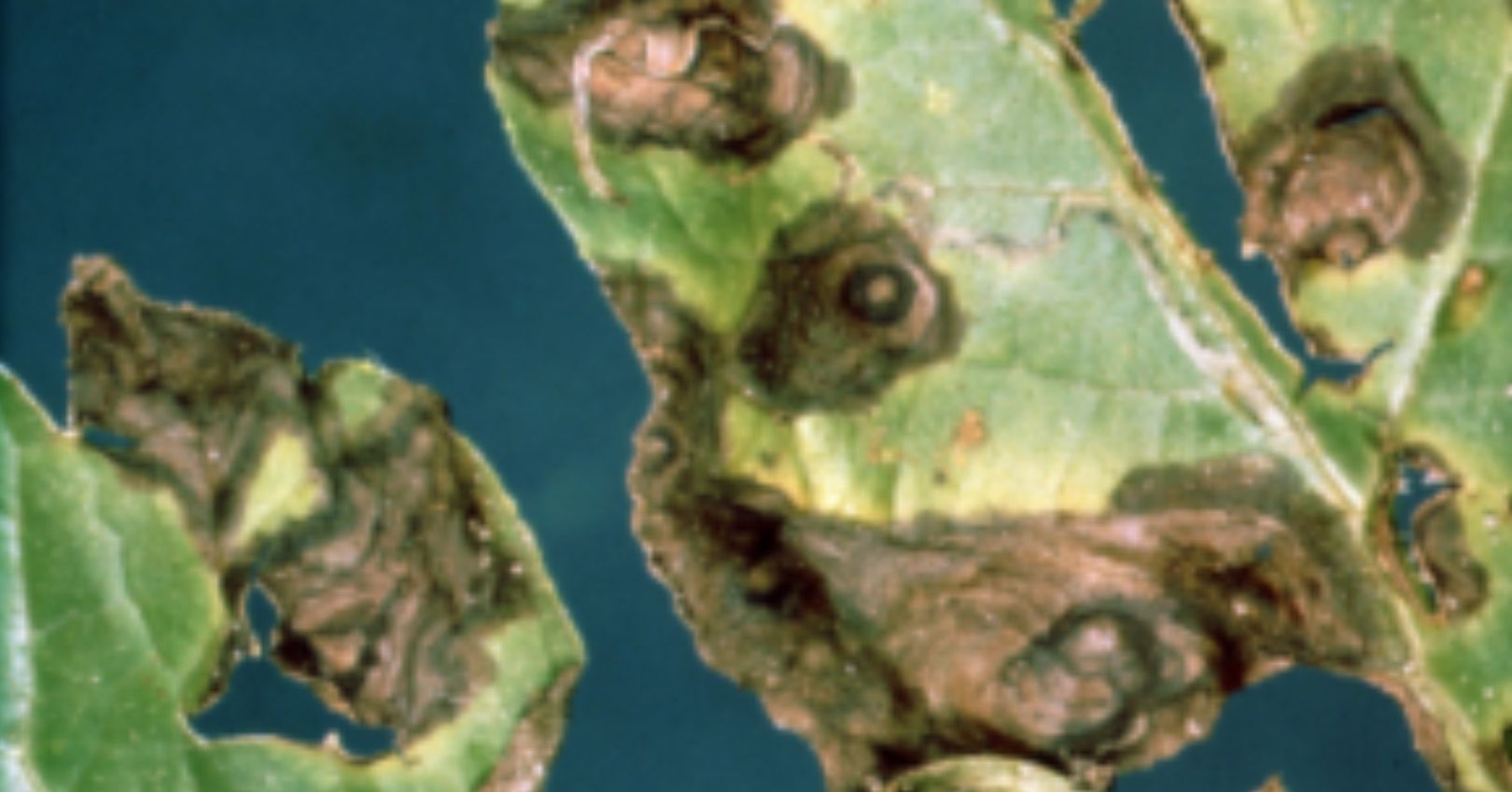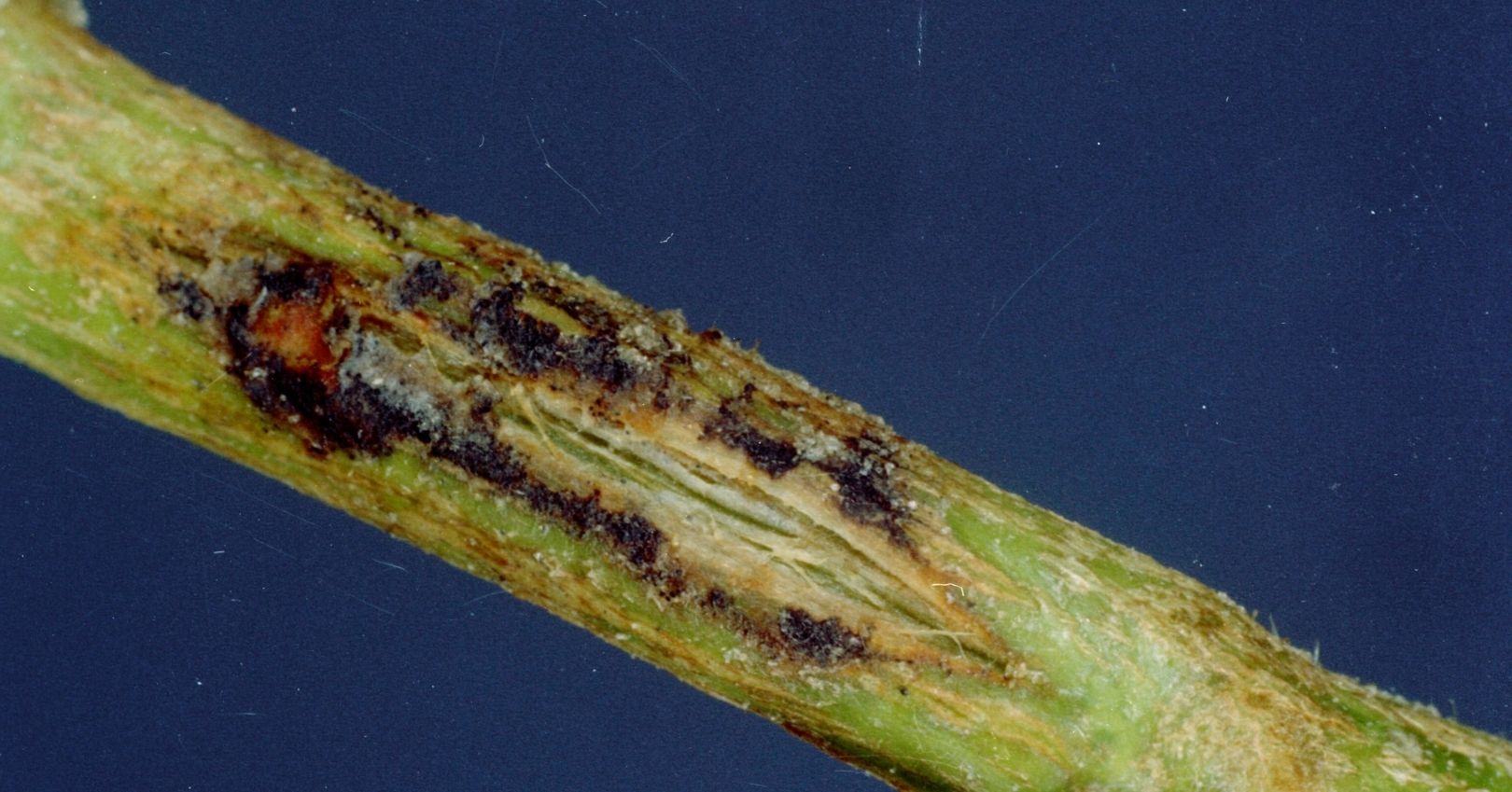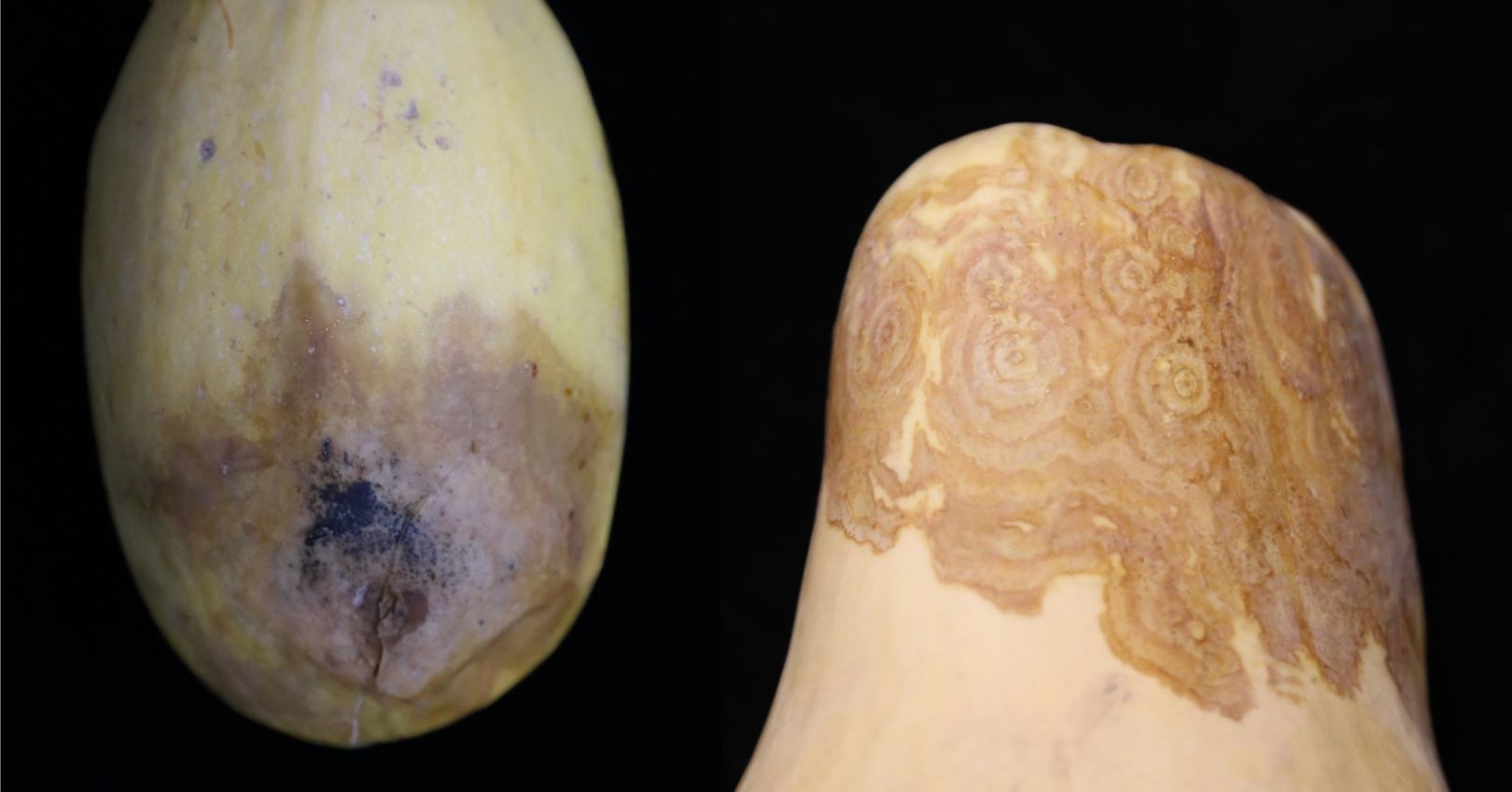Gummy Stem Blight (Black Rot)



Casual Agent
Gummy stem blight is caused by the fungus Didymella bryoniae. It affects squash, cucumber, melon, and watermelon
Symptoms
The disease affects foliage, stems, and fruit. Leaf and stem infections are known as Gummy Stem Blight, appearing as necrotic (dead) spots. Stems sometimes ooze gum. On squash fruit, the disease is called Black Rot. On butternut squash, the disease may form distinct concentric rings.
Disease Cycle
Didymella is seed- and soilborne. The fungus can survive on infected plant debris for up to 2 years in the soil. Seedlings can become infected if the seed is contaminated. Optimum conditions for infection range from 65-75°F (depending on the crop) and moisture of up to 10 hours. The fungus can produce fruiting structures on decaying tissue after infection, and the spores move to new leaves and neighboring plants through splashing water.
Management
- Use certified disease-free seed or treat seeds. Seedlings can be infected without showing symptoms.
- Sanitation is very important if an outbreak occurs in the greenhouse. There are no products available in Utah that can be applied to seedlings in the greenhouse to control the disease. After removing infected seedlings, disinfect the greenhouse trays, pots, tables, ceiling, etc. Because the spores move by splashing water, they can reside on any part of the greenhouse structure as well.
- Rotate cucurbit crops for 2-3 years to avoid outbreaks in the field.
- Deeply plow crop residues to reduce inoculum left on plant debris. This is very effective when combined with crop rotation.
There are many fungicides that can be applied. Rotation between fungicide classes is very important for fungicide resistance management. There have been reports of Didymella bryionae having developed resistance to some fungicides in other states.

